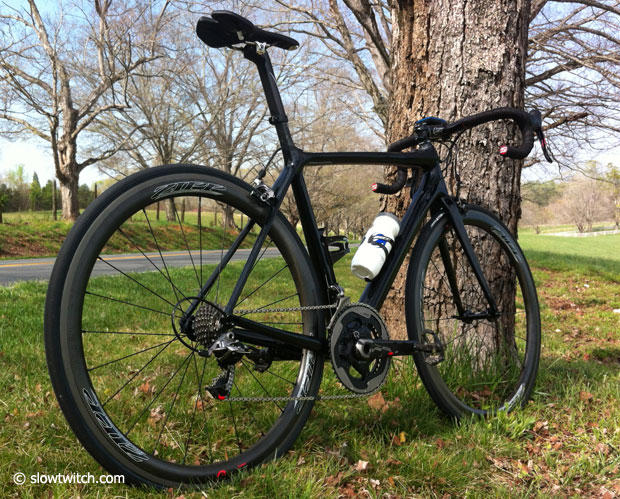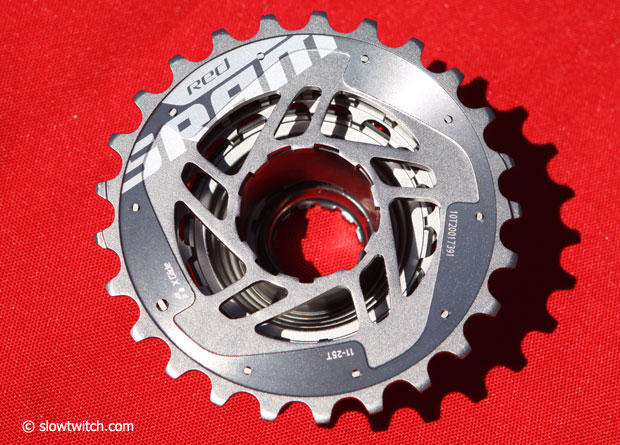Some refer to it as a 2013 SRAM Red group while others call it a 2012 edition, but no matter what name you might want to call it, we are having a closer look at the newest high-end group from this brand.
In early March a very stealth looking Trek Madone SSL Project One showed up here with that recently launched group, Zipp 303 Firecrest wheels and components, and I had the opportunity to ride that bike for several weeks. I have actually never before ridden any Trek bike but am quite familiar with the current SRAM Red group and have it on both a road and triathlon bike. Unlike some other folks I never really had an issue with my SRAM groups, but I have heard some folks gripe about the front derailleur and seen a few Slowtwitch forum threads pop up about this specific topic. But this new SRAM Red group had promised to address those concerns and more.

Rolling out of the driveway the first thing I noticed was the very quiet drive train action and that sensation stuck around for the whole testing period. Hmm, so maybe the older group is a bit too noisy. This new quiet sensation is linked to the re-worked cassette that now features elastomer rings within and is machined from a steel billet. This re-design of the cassette also helped eliminate some weight.

The new Red front derailleur also helps to keep this group quiet and I would say that this front derailleur is my favorite bit of the new SRAM Red group, and just as advertised with the new Yaw technology it indeed never required any trimming. Shift down from the big to the small chain ring in the front and run through the gears in the back all day long and if you stay away from small-small you are good to go with no noise what so ever. The same is true when you shift back up to the big ring up front. So the new Yaw technology works and replacing the titanium cage with an aluminum/steel one was a good call. A few times I had to shift twice to move the chain from the small to the big chainring, but I would call that a timid operator issue and not a concern with the product. I also appreciated the integrated chain guide, even though I never had to call on it, but peace of mind is worth quite a bit. With the test bike now back at SRAM, I am again riding my trusted steed with the old group and realized quickly how thoroughly I miss the new group, and now I actually do feel that I have gripes with the front derailleur. I guess you don't know what you are missing until you have tasted it.

The shift/ brake units now feature a textured hood with a slightly larger knob but the lever bodies are actually narrower. The levers themselves though appear to be larger and the whole unit feels very good and comfortable.

I had somewhat lukewarm expectations of the new brakes, thinking that the new cam actuated Aero Link version would be lighter for sure, but maybe not as reliable or progressive as the current version which I like quite a bit. But I was pleasantly surprised that the new brakes were not only on par with the old brakes in terms of performance, but worked even better and had a very fine progressive feel. The narrow profile of these stoppers surely must also help with aerodynamics numbers.

My test bike had the integrated Quarq power meter, but that'll be a topic for another review. The chain rings do look different for sure but in all honesty I felt not much of a difference compared to my current Red cranks.

SRAM has called the group the lightest group set ever and at a claimed 1737 grams that would indeed appear to be an apt description, but we never had the group elements in hand separately. So we can't vouch for those numbers, but the total bike felt very light indeed.

Hopefully we will see this technology trickle down to the other SRAM groups, because Force, Rival and Apex riders surely would prefer that Yaw technology front derailleur over what they currently have. They may not even particularly need it, but surely will want to have it. I for one surely want to have the new SRAM Red.
All images © Herbert Krabel / slowtwitch.com


